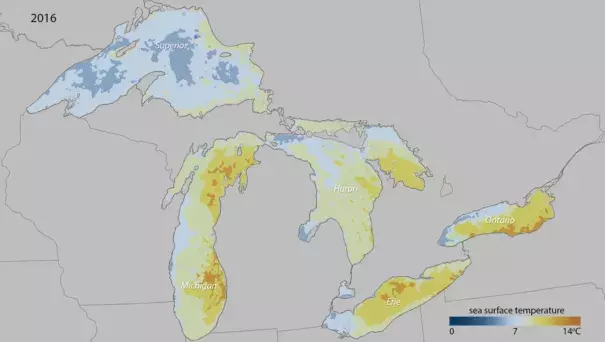Great Lakes unusually warm for this time of year

Each of the lakes — Superior, Michigan, Huron, Erie and Ontario — as well as lake St. Clair, all have temperatures well up from this time last year. When compared to long-term averages, the surface water warmth now is even more striking: Lake Michigan, for example, is above its long-term average temperature by 3.81 degrees Fahrenheit. (Think about how long, and how much energy, it takes to warm that volume of water that many degrees.) Lake Erie is 3.4 degrees above average.
Relatively warm surface water at this time of year has historically meant Great Lakes that remained mostly ice free for the entire winter, said George Leshkevich, a physical scientist at the National Oceanic and Atmospheric Administration's Great Lakes Environmental Research Laboratory. The laboratory uses data gathered from several Earth-orbiting satellites, offering a more lake-wide assessment of the Great Lakes than isolated data from buoys.
It also can mean a lot of lake-effect snow, as cold air blows over the relatively warm, open Great Lakes, picks up moisture and then deposits it back as snow once the air reaches the colder land, Leshkevich said. Open water can also mean more evaporation all winter long, which may slow recent years of rebounding lake levels.
The cause of the higher lake temperatures goes back to last winter, he said. A relatively mild winter — only about 34% ice cover at its peak on the Great Lakes — meant the sun was beginning to warm the lakes earlier in the spring, instead of melting ice.
"We got a jump-start on lake warming in the spring," Leshkevich said. "In 2014, there was some ice in Marquette on Lake Superior June 6. Ice lasted well into April and May" on the other lakes.


